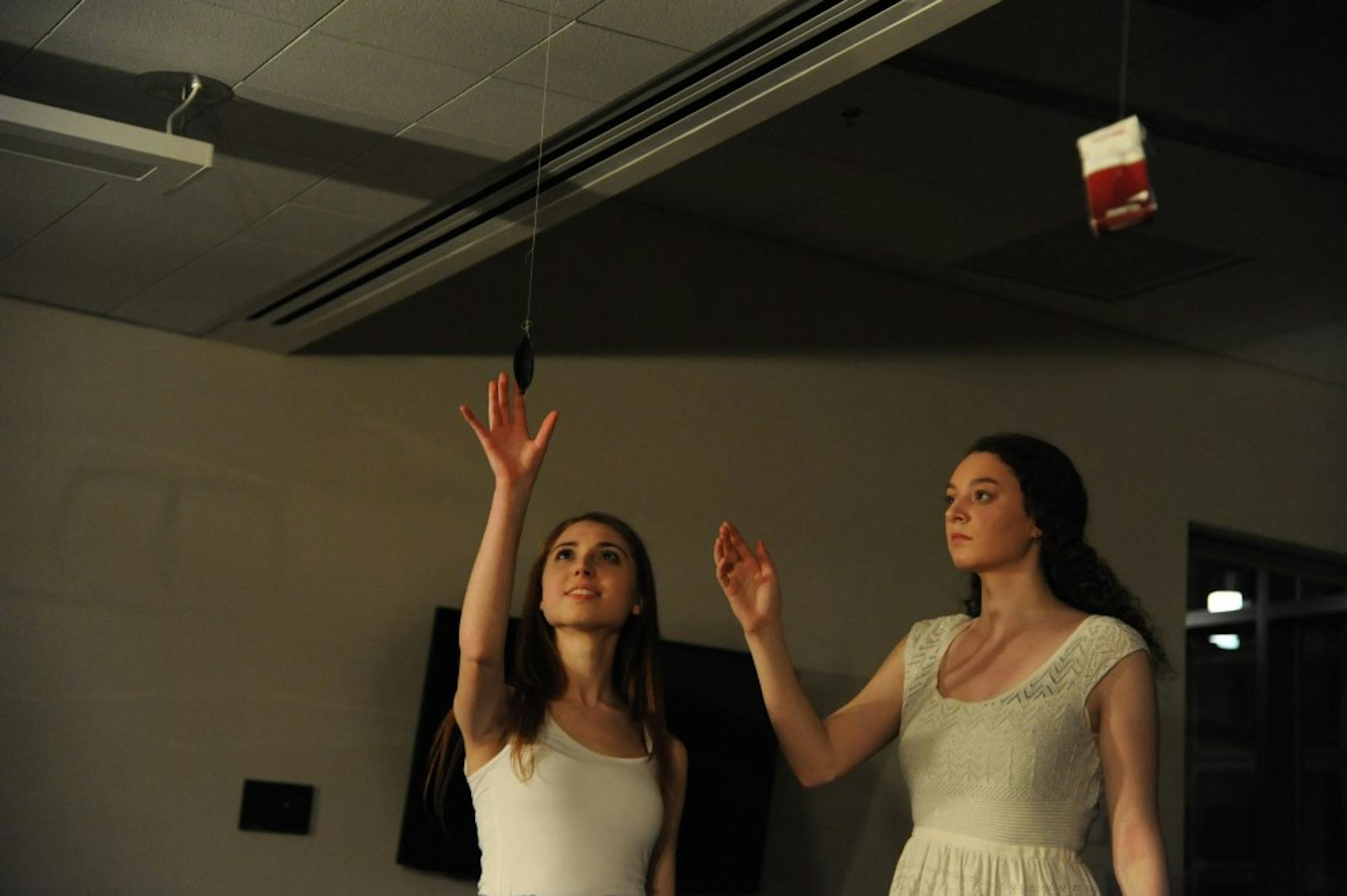Play uses unique staging to showcase dark themes
columbinus was a deeply and hauntingly affecting play. The show used high school archetypes, such as nerds and jocks, to profile students at Columbine high school, following them through the 1999 school shooting and its aftermath.
Only at the end of the first act did columbinus reveal that the archetypes “freak” and “loner” actually served as stand-ins for murderers Eric and Dylan, respectively. The shooting at Columbine high school was the most devastating school shooting of its time.
Its legacy can be felt in current police and school security policies, as well as in the enduring interest behind the shooters’ seemingly random motives.
The play, directed by Amanda Ehrmann ’18 under the Free Play Theatre Cooperative, relied on a small but dedicated cast and production team to create the evocative show.
The cast performed over the weekend in Schwartz Hall, using the building’s layout and integrated technology to enhance the production.
As Ehrmann wrote in the program’s preamble, “modern day theatre has all these unspoken rules.” The production’s unusual subject matter inspired Ehrmann to delve into unconventional theater and staging.
Ehrmann wrote that these unspoken rules in modern theater included proponents like, “[a]ctors should always face out; after all, there is no way to show emotion when people are looking at your back!”
The performances largely ignored these modern theater conventions and favored more experimental choices.
The cast used Schwartz’s three doors as entrances and exits, which caused the characters to walk through the audience’s rows as they made their way to the stage. The audience sat in sets of two rows, with each set bordering a side of the stage.
This unusual staging choice created a unique dynamic between the audience and the characters—characters would speak directly to some sides of the audience and ignore other sides by turning their back to them.
In one of the most emotionally charged scenes, called “History Lesson,” Freak/Eric (Jacob Klein ’18) turned his back to different sections of the audience as he yelled about how much he vehemently hated the little things that mess up his day.
He then went on to praise famous murderers, including the stories of Cain, Leopold and Loeb and Hitler. The scene was jarring, and Klein managed to convey his character’s anger even as his back was turned.
In first act scenes “Guidance” and “Guidance Part 2,” the guidance counselor characters sat in the audience as other characters interacted with them. In the scenes, the counselors (Shira Harary ’17 and Shaquan McDowell ’18) sat in reserved seats in the audience as they counseled Freak/Eric and Loner/Dylan (Dashiell Marley ’16).
The experience of sitting next to the guidance counselors as Freak/Eric and Loner/Dylan yelled at them allowed the audience to view the scene from the counselor’s minds.
In quick succession, a spotlight shifted the scene’s focus to the students’ points of view. The lights on the counselors went dark as the students started to yell at them for misunderstanding them and for being inferior to them.
These switches in perspective and creative staging choices made the audience see the scene from both the students’ and the counselors’ perspectives, adding poignancy to the scenes.
The performances also used technology in novel ways. Above each side of the audience was a TV screen with a projector on the remaining wall.
The TV screens and projectors announced titles for each of the scenes and then displayed images relating to the scene’s events. In relevant scenes, the screens displayed copies of artifacts from the Columbine trials.
For instance, in one scene the screens displayed copies of an actual story that Dylan had written for his creative writing class.
The play focused on the victims and their families in a series of scenes titled “Aftermath.” In these scenes, the cast stepped out of their archetypical high school roles and played the parents of Columbine victims. The cast’s speeches were eloquent and moving and felt genuine.
At one point during these scenes, the parents stood and encircled Eric and Dylan—a choice that seemed symbolic in many ways. Having the parents denounce the murders as they slowly moved toward them gave the scene a retributive air. On the other hand, the scene’s staging also emphasized the devastation that two people alone caused.
As Ehrmann wrote in her preamble, “The piece is not perfect, it does not honor the victims as much as I would have liked … It does not hand [the viewers] the answers, which is terrifying, chilling, and exactly why theatre survives."
An earlier version of this article incorrectly identified Shaquan McDowell '18 as Shauna MacDowell '18. Further corrections were appended on April 29.



Please note All comments are eligible for publication in The Justice.